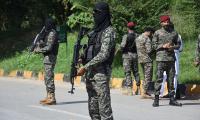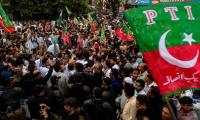The opening of the Kartarpur corridor back in 2019 was a rare diplomatic and soft power victory for Pakistan and an even rarer victory for pluralism, tolerance and religious coexistence in a region known for the opposite despite its tremendous. Stretching about 4.1 kilometres from the India-Pakistan border, the corridor allows Sikh pilgrims to visit the Kartarpur Gurdwara, final resting place of Guru Nanak, the founder of Sikhism in the Narowal District of Pakistan without a visa and considerably shortens the journey for Sikh pilgrims who want to visit the sacred temple. Opening avenues for Sikhs across the border to visit one of the most sacred sites in their faith without the usual regulatory and logistical burdens before our neighbours, sadly, did not see fit to do the same for Pakistani Sikhs enabled the country to claim the moral high ground for its neighbours while highlighting its commitment to peace and tolerance, at least in this instance. Now, Sindh’s Minister for Tourism Zulfiqar Ali Shah is seeking to build on this success. The minister has called for the establishment of another Kartarpur-like religious corridor to facilitate those eager to visit religious sites in Sindh. The province is home to some of the oldest Hindu temples and numerous abandoned Jain temples and could potentially attract scores of Hindus and Jains seeking to visit them. The minister also proposed that the Sindh government could commence a weekly flight from India to Sukkur or Larkana for the facilitation of religious tourists.
Pakistan does not often get the chance to showcase its wonderful religious and cultural diversity and when these topics are brought up in relation to the country it is usually in the context of inter-communal strife, persecution and targeted violence. Opening up the doors for religious tourists thus offers Pakistan the ability to project a kinder image and do some much-needed reputational damage control. Given the dire state of the country’s economy, one also cannot ignore the significant revenues tourism can generate. Currently, Pakistan earns about a billion dollars annually from tourism. This is low compared to countries like Thailand who generate up to 30 times this amount. These countries are not only able to attract religious tourists from the region but millions from around the world.
What do countries like Thailand, which are also considered developing countries like Pakistan, have that this country lacks? For starters, the security and law and order situation, though not perfect, is relatively much better and the region generally more stable which makes it more conducive for travel and commerce. Facilities for tourists to stay and travel within the country and also between countries are also much better established. These are things Pakistan will have to work on if it is truly serious about tourism. More importantly, addressing the nation’s internal sectarian divides is also a must. Pakistan is unlikely to attract many visitors if its minority communities are always cowering in fear, one accusation away from having their lives ruined, and if their religious sites are targets for violence. It is hoped that as Pakistan moves towards opening its doors to the world it will also begin seeing the concerns, futures and lives of its ethnic and religious minorities in a different light.
Fisherfolk community has long been sidelined, their voices drowned by clamour of more powerful actors
Earlier this month, 27 people were martyred and 40 injured in suicide explosion at Quetta’s railway station
Medical experts estimate that global deaths attributable to AMR could reach 2 million in 2050
G20 leaders met to address global challenges and crises and promote strong, sustainable, and inclusive growth
Day aims to affirm need to eliminate child sexual exploitation, abuse and violence
Chief Minister House Khyber Pakhtunkhwa has become centre of PTI’s political activities







